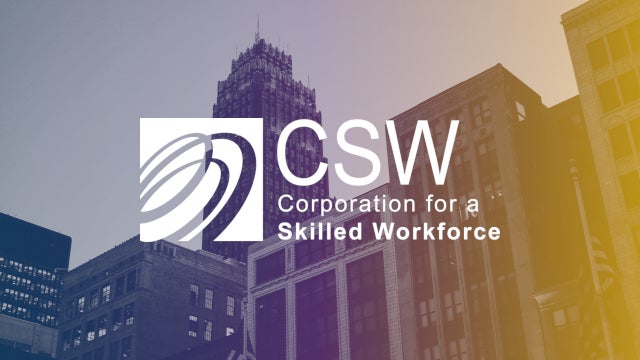Ask a group of corporate leaders about the challenges facing their businesses, and you’re likely to get a list including workforce recruitment and retention, employee communication, workplace safety, risk management, and issues surrounding diversity, equity, and inclusion. One essential source of innovation and experience that can help solve these challenges is being underutilized by most American corporations—and it’s sitting right under their noses.
That source is a company’s own workers. Over the past year, the Idea Lab on Worker Voice in Corporate Governance, an initiative of the Aspen Institute’s Business & Society Program, has been exploring policies, practices, and structures of corporate decision-making systems. This team of researchers is looking at ways for companies to tap into the insight and expertise of the people who are on the front lines of the business. The Idea Lab hopes to spark a different way of looking at corporate governance.
The benefits of employee inclusion are obvious to those who give it a moment’s thought, but—for those who are steeped in traditional corporate culture—so are the obstacles. David J. Berger, a partner at the law firm Wilson Sonsini Goodrich & Rosati, names the biggest barrier as “the continuing dominance of the shareholder primacy ideology that controls the corporate governance debate in the US.” This belief equates the “best interests of the corporation” with the “best interests of shareholders,” and in so doing discounts the best interests of employees.
But when corporate managers shut themselves off to the needs of employees, they also shut themselves off from sources of business intelligence, bright ideas, and effective communication. It’s time for corporations to open their ears to worker voice—and to start listening in earnest.
Companies and their employees rely on each other for success.
American companies need their workers for many things—labor is just one of them. Companies need productivity, efficiency, and dedication from their employees, and the best strive to engender loyalty and innovation. Some, of course, take a less inclusive approach and look at “human resources” mathematically, much like they would assess power consumption or lease expenses. At extremes, this leads to exploitation and worker unrest, but even in small doses can be detrimental to a workplace.
The relationship between worker and employer isn’t as adversarial as it is often painted, however; the 2021 Edelman Trust Barometer shows that 72 percent of Americans believe their employers to be trustworthy. Indeed, workers have a deeply vested interest in seeing their employers succeed, because (among other reasons) their livelihoods depend on it. Rather than viewing workers as an expense, companies can and should view them as partners in a shared mission. As we move forward, that means giving them an increased presence in deciding how companies are run.
Workers can see problems—and solutions—before management can.
A worker knows when she feels unsafe, but an inattentive supervisor may not be aware of a problem until there’s an accident. Toxic culture in a branch office may force out dozens of productive employees before a complaint makes it halfway up the personnel-management chain. Small problems very often become big problems before anyone in the C-suite is aware. As one corporate director interviewed for the Idea Lab’s latest paper said, “Some boards would be stunned to see what’s actually going on in their organizations.”
Beyond merely pointing out problems, workers can spot opportunities to improve productivity and safety, since no one knows a job better than the person doing it. In the early days of the pandemic, frontline workers set to work making their workplaces safer, often anticipating and solving problems before official policies could be formulated. A piece in Fortune noted that “nurses and other frontline staff were critical in developing such as keeping IV pumps and ventilation control panels outside of patient rooms so they can be adjusted without entering, which both reduced transmission risk and preserved vital personal protective equipment.”
Even in non-pandemic times, workers create efficiencies that improve their working lives. Yet board members of most corporations have little access to these workers and their smart ideas, relying on surveys and reports to understand how well a company is functioning. As it stands, different companies offer board members varying levels of access to frontline employees, but there is little information to be gained on a site visit with employees on their “best behavior” because the big bosses are walking through. One solution is an above-board invitation for board-level conversations, creating a formalized structure to relay business intelligence and ideas from employees to the people who make strategic judgments and decisions.
Listening to workers is the only path to equity and inclusion.
Corporate commitments to diversity, equity, and inclusion have proliferated in recent years but companies have learned that the old go-to tools like employee engagement and satisfaction surveys are insufficient to the task. Frequent and direct conversations with employees are essential to identifying biases in workplace policies, pay scales, and culture. Indeed, business leaders are learning that workers themselves need to drive these efforts.
On issues such as pay equity and benefits, it’s imperative that employees feel their needs are being addressed. In the last few years, Salesforce eliminated its gender pay disparities when two women executives brought the issue to light. PayPal, which met that goal a few years earlier, also saw significant gains in wages, benefits, healthcare cost reductions, and diversity and inclusion initiatives thanks to its strong employee-centered culture. The same is true for smaller issues of workplace culture, concerns that traditionally might never make it to an executive discussion, particularly one run on a strict agenda.
Workers can offer a different—and important—perspective.
Much ink has been spilled lamenting corporate short-termism, the need to goose profits quarter after quarter for the sake of stock prices and executive bonuses. Workers, a great portion of whom will outlast a CEO’s tenure, are more inclined to keep an eye on the long game. They want to work for a company that attracts talent, respects workers, and keeps them employed at competitive salaries. They may also emphasize a company’s community ties and responsibilities, and can serve as a moral force on a board that otherwise may fail to see the people who are affected by its decisions.
Worker voices can also help translate executives’ concerns into reassuring messages to other workers. When informed by the broader vision that board member access grants them, worker representatives can build reassuring messaging around corporate initiatives, even ones that might seem disadvantageous to workers at first glance.
Now is the time to invite worker voices into corporate boardrooms.
More companies are recognizing that they function not just for shareholders, but for a variety of stakeholders. Their employees are a company’s best link to customers, suppliers, and communities. Even as unions struggle in most business sectors, employees in tech and white-collar enterprises are making their voices heard through social media campaigns, leaks to media, or simply by jumping ship.
Now is the perfect moment for corporate management to welcome those voices in a formal way. Doing so requires innovation and culture change for most American corporations. But because this is a new frontier, there are also many ways to start the journey. Here are a few recommendations:
- Commit to being accountable to workers.
- Create new leadership routines to listen to workers and build closer ties between the frontline and the executive suite.
- Form worker committees on familiar and pressing issues like worker health and safety or diversity, equity, and inclusion. Give these committees power and independence from management.
- Create a board committee dedicated to worker interests and concerns, and define expectations and standards for that committee with workers and their advocates.
- Design jobs and roles so that everyone at the company is empowered to be heard.
- Incorporate worker engagement into management promotion criteria.
- Build on what you know. Corporate directors have long been accountable to financial investors; what needs to be true to ensure that directors are equally accountable to those who invest their labor in the company?
The Idea Lab on Worker Voice in Corporate Governance continues to gather information and opinions on issues surrounding worker representation and has recently released a six-report white paper entitled A Seat at the Table: Worker Voice and the New Corporate Boardroom. We believe our research will lead to healthier companies, happier workers, and a more robust national economy—if we are willing to listen.


